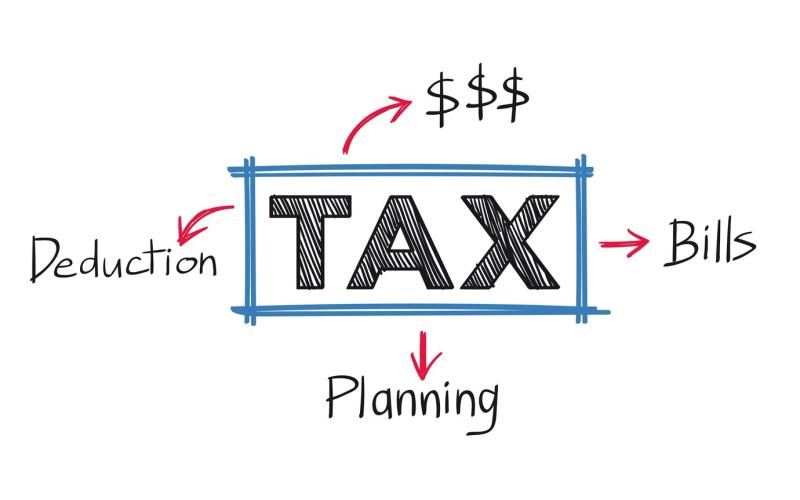What is the Creator Economy & How Much Could I Earn?

The creator economy is a rapidly growing sector that enables individuals to monetise their content, skills, and influence online.
It encompasses social media influencers, bloggers, YouTubers, TikTok stars, and OnlyFans creators, among many others.
In recent years, technological advancements and shifts in consumer behaviour have made it easier than ever for content creators to earn a living online.
But what exactly is the creator economy, how does it work, and how much could you potentially earn by becoming a part of it?
This guide will explain everything you need to know.
Chapters
- What is the Creator Economy?
- When Did the Creator Economy Start?
- How Does the Creator Economy Work?
- Why Authenticity Counts in the Creator Economy?
- Common Types of Content Creators
- Affiliates
- Brand Ambassadors
- Celebrities
- Content Producers
- Customer Advocates
- Influencers
- Key Opinion Leaders (KOLs)
- How Much Could I Earn in the Creator Economy?
- Do I Need to Pay Tax on Earnings from Content Creation?
- Conclusion
What is the Creator Economy?

The creator economy refers to the ecosystem of digital platforms, tools, and services that allow individuals to create and monetise content independently.
Unlike traditional employment, where income comes from salaries or wages, content creators generate revenue through various means, including advertising, brand deals, subscriptions, and direct audience support.
A key aspect of the creator economy is that it bypasses traditional media and retail channels, allowing individuals to build their own audiences and earn directly from them.
Social media platforms such as YouTube, Instagram, TikTok, and OnlyFans play a crucial role in facilitating this model.
When Did the Creator Economy Start?
While elements of the creator economy have existed for decades, the term itself gained prominence in the early 2020s.
The rise of social media platforms in the mid-2000s, such as YouTube (2005) and Instagram (2010), laid the groundwork for content creators to gain followings and monetise their influence.
However, it was the introduction of direct monetisation features, such as YouTube's Partner Programme in 2007 and Patreon in 2013, that truly kickstarted the creator economy.
The COVID-19 pandemic accelerated the growth of this sector as more people sought alternative income sources and brands increased investment in digital marketing and influencer collaborations.
How Does the Creator Economy Work?

The creator economy operates on a decentralised model, where individuals leverage digital platforms to engage with audiences and generate revenue.
There are several ways in which creators earn money, including:
- Advertising Revenue: Platforms like YouTube share a percentage of ad revenue with creators whose videos meet monetisation requirements.
- Sponsorships & Brand Deals: Companies pay influencers to promote their products or services.
- Subscriptions & Memberships: Platforms like OnlyFans and Patreon allow creators to charge fans for exclusive content.
- Affiliate Marketing: Creators earn commissions by promoting third-party products using unique tracking links.
- Merchandise Sales: Many influencers create and sell their own branded products.
- Fan Donations & Crowdfunding: Supporters can contribute via platforms such as Buy Me a Coffee or Ko-fi.
Why Authenticity Counts in the Creator Economy?
One of the key drivers of success in the creator economy is authenticity.
Unlike traditional advertising, where celebrities endorse products through scripted promotions, content creators thrive on building genuine relationships with their audiences.
Authenticity fosters trust, engagement, and loyalty, leading to higher audience retention and monetisation opportunities.
Audiences are increasingly savvy and can detect inauthentic endorsements.
This is why successful creators carefully curate their brand partnerships and ensure that their content aligns with their personal values and audience expectations.
Common Types of Content Creators

There are many types of content creators within the creator economy, each serving a different niche and audience.
Some of the most common include:
Affiliates
Affiliate creators earn commissions by promoting products or services.
They use special links to track sales, earning a percentage of the revenue when someone makes a purchase through their link.
Brand Ambassadors
Brand ambassadors form long-term partnerships with companies, regularly promoting their products in exchange for compensation, free products, or commissions on sales.
Celebrities
Traditional celebrities, including actors and musicians, also participate in the creator economy by monetising their personal brands through social media, endorsements, and exclusive content.
Content Producers
Content producers create videos, blogs, podcasts, or other forms of digital media that attract audiences.
Their revenue typically comes from advertising, sponsorships, and audience support.
Customer Advocates
Customer advocates are everyday consumers who share their experiences with products or services, often influencing purchasing decisions through organic recommendations.
Influencers
Influencers leverage their large social media followings to promote brands, products, or lifestyle trends.
Their income often comes from sponsorships and collaborations.
Key Opinion Leaders (KOLs)
KOLs are industry experts or thought leaders whose opinions hold significant weight in specific niches.
They often collaborate with brands in a more professional or advisory capacity.
How Much Could I Earn in the Creator Economy?
Earnings in the creator economy vary widely depending on factors such as platform, audience size, engagement levels, and monetisation methods.
Here are some estimates for popular platforms:
- YouTube: Creators can earn between £1 and £3 per 1,000 views from ad revenue. A YouTuber with 1 million views per month could make £1,000–£3,000 from ads alone, excluding sponsorships.
- TikTok: The TikTok Creator Fund pays an estimated £0.02–£0.03 per 1,000 views, meaning a viral video with 10 million views could generate £200–£300.
- Instagram: Influencers with 100,000 followers can earn anywhere from £500 to £5,000 per sponsored post.
- OnlyFans: Top creators can earn six-figure incomes, with some making over £1 million per year. Average earnings vary but can range from £1,000 to £10,000 per month depending on subscription fees and content popularity.
- Patreon: A creator with 1,000 patrons paying £5 per month could generate £5,000 monthly income before platform fees.
Do I Need to Pay Tax on Earnings from Content Creation?

Yes, content creators in the UK are required to pay tax on their earnings.
If you earn more than £1,000 annually from self-employment, you must register as self-employed with HMRC and file a Self Assessment tax return.
Tax obligations include:
- Income Tax: Paid on total earnings after allowable expenses.
- National Insurance Contributions (NICs): Class 2 and Class 4 NICs may apply depending on your profit levels.
- VAT: If your earnings exceed £85,000 annually, you may need to register for VAT.
Keeping accurate financial records and consulting a tax professional can help you stay compliant with HMRC regulations.
Conclusion
The creator economy offers vast opportunities for individuals to monetise their skills and content, whether through social media, brand partnerships, or subscription-based platforms.
While earnings can vary significantly, many creators make a sustainable income, with some achieving financial success beyond traditional employment.
If you are considering becoming a content creator, understanding how the industry works, staying authentic, and managing your finances responsibly will set you on the path to success.
If you need assistance navigating the tax implications of your earnings, speak to one of our specialist tax advisors who can help ensure you remain compliant while maximising your income potential.
Disclaimer: Any advice in this publication is not intended or written by One and Only Accounts to be used by a client or entity for the purpose of (i) avoiding penalties that may be imposed on any taxpayer or (ii) promoting, marketing or recommending to another party matters herein.



